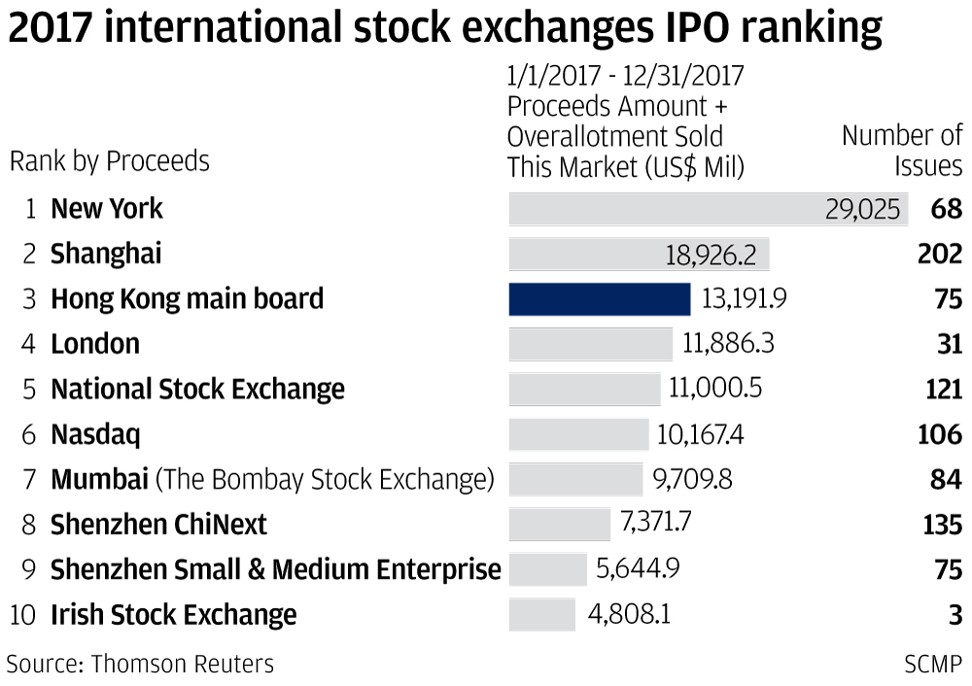
Breaking | Xiaomi to be the first target of China’s unicorn funds, giving mainland investors a taste of marquee IPOs
Six of the first funds will have a combined war chest of 300 billion yuan, more than the sum total of every A-share IPO last year, enough for them to act as cornerstone investors in the biggest blockbuster stock offers
Xiaomi, which is seeking to raise up to US$10 billion in a Hong Kong stock offer, will be the first to sell Chinese depository receipts, part of a government effort to let mainland investors partake in the growth among China’s marquee technology companies, according to three people familiar with the plan.
The CDRs form the final missing pieces in a complex fundraising plan for Xiaomi, which took just eight years to grow from an industry upstart to the world’s fourth-largest smartphone maker by shipments. The company will go on a roadshow by the end of June to persuade US and European institutional investors to value its entire business at no less than US$70 billion.
Smartphone giant Xiaomi puts final touches on US$10 billion IPO
Stock market executives from New York to Singapore had been wooing the company for months to persuade Xiaomi to raise funds on their bourses, in a race for the title of the global fundraising capital.
Nowhere was the competition fiercer than between Hong Kong, Shanghai and Shenzhen. Hong Kong’s stock market operator and securities regulator last year pushed through the biggest reforms in the city’s listing regulations in decades to let so-called variable interest entities (VIEs), or companies with multiple classes of stocks, such as Xiaomi, to raise funds.
China’s securities regulator showed that it too can bend rules and fast track listing approvals in a fortnight for technology companies, instead of the usual two-year queue.
Meet the CEO who could become China's wealthiest man after Xiaomi IPO
That put Beijing-based Xiaomi in a dilemma, torn between the entreaties of its home-market watchdog and its aspiration to be a global company.
A compromise may have been found, as Xiaomi’s listing plan was vetted and passed by the Hong Kong stock market’s Listing Committee, getting the formal green light by the regulator to raise capital, according to a source close to the Securities and Futures Commission.
Up to 70 per cent of Xiaomi’s US$10 billion initial public offer (IPO) will be raised in Hong Kong, with the balance 30 per cent raised through CDRs, Reuters reported this week, citing unidentified people familiar with the matter.
Some of the missing details were announced overnight, with the establishment of six unicorn funds authorised to become strategic investors in technology IPOs, according to a statement published on the China Securities Regulatory Commission’s website.
Each of the funds will be capped at 500,000 yuan per investor, each with a lock-up period of three years. The funds will charge less than 0.1 per cent in annual management fee, and less than 0.03 per cent in custodian fee, significantly less than ordinary fund products.
China’s Xiaomi pushes into France and Italy ahead of public listing
The six funds will be managed by China Southern Asset Management, China AMC, E Fund, Harvest Fund, China Universal Asset Management, and China Merchants Fund, according to the regulator.
They can each raise at least 5 billion yuan, but no more than 50 billion yuan, giving them a combined war chest of 300 billion yuan (US$47 billion) available to act as anchor investors in the CDRs. Last year, all initial public offering deals in China’s A-share market raised 217.2 billion yuan in total, according to the Securities Daily newspaper.
The funds will be distributed through six banks: Industrial Bank of China, Bank of China, China Construction Bank, Agriculture Bank of China, Bank of Communications, and China Merchants Bank. Five of these six banks - except Bank of Communications - were invited this week to help Xiaomi’s Hong Kong IPO, Bloomberg reported separately.
The funds will be authorised to commence their roll-out within a week, and must complete their subscriptions within six months, the regulator said.
The lucky 56: Xiaomi IPO to make dozens of workers millionaires
The regulator said they must follow all trading rules and conduct themselves properly to protect the interest of investors.
“There should not be any misleading marketing, or false disclosure, that may hurt the interest of investors,” said the CSRC.



